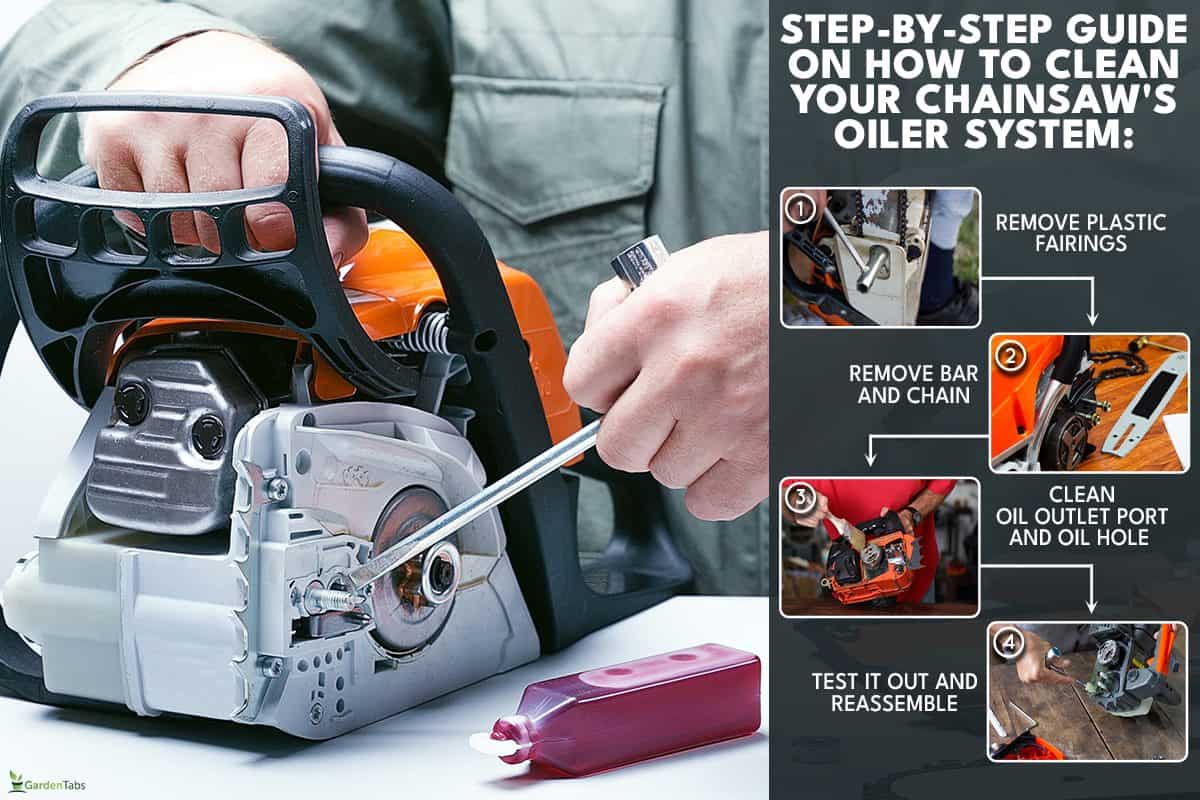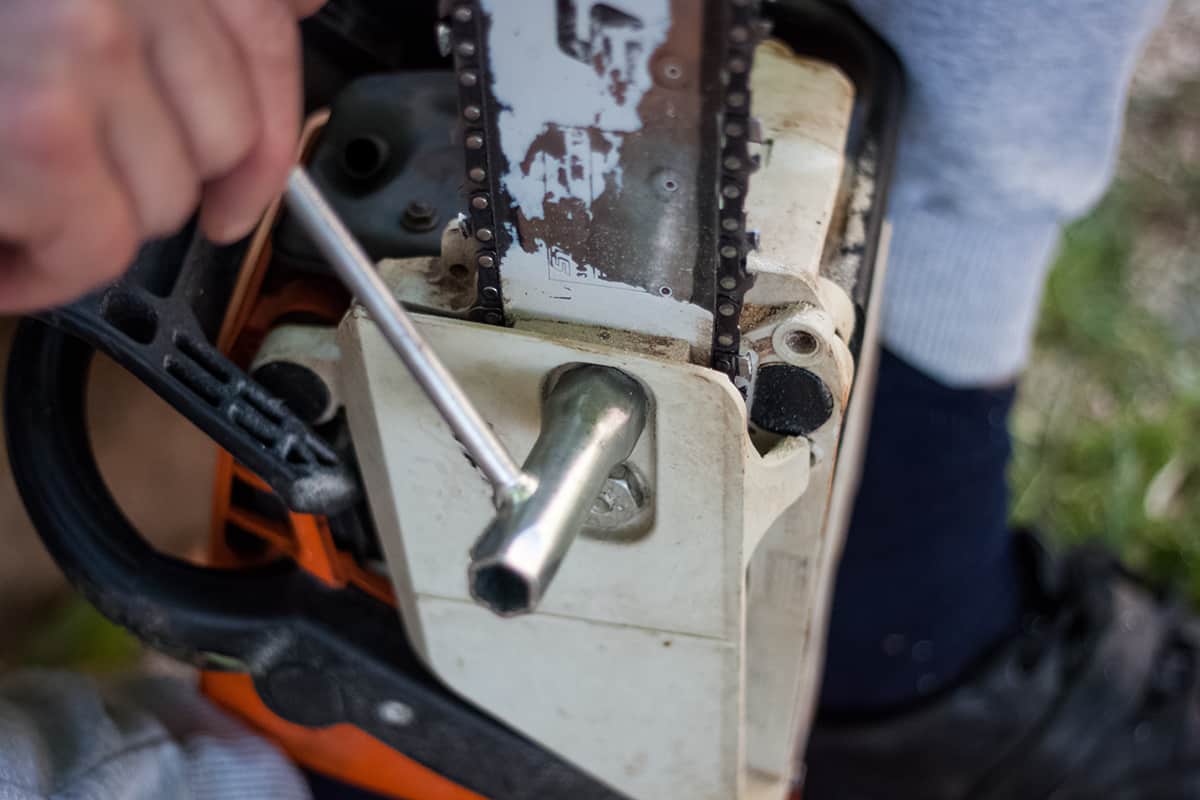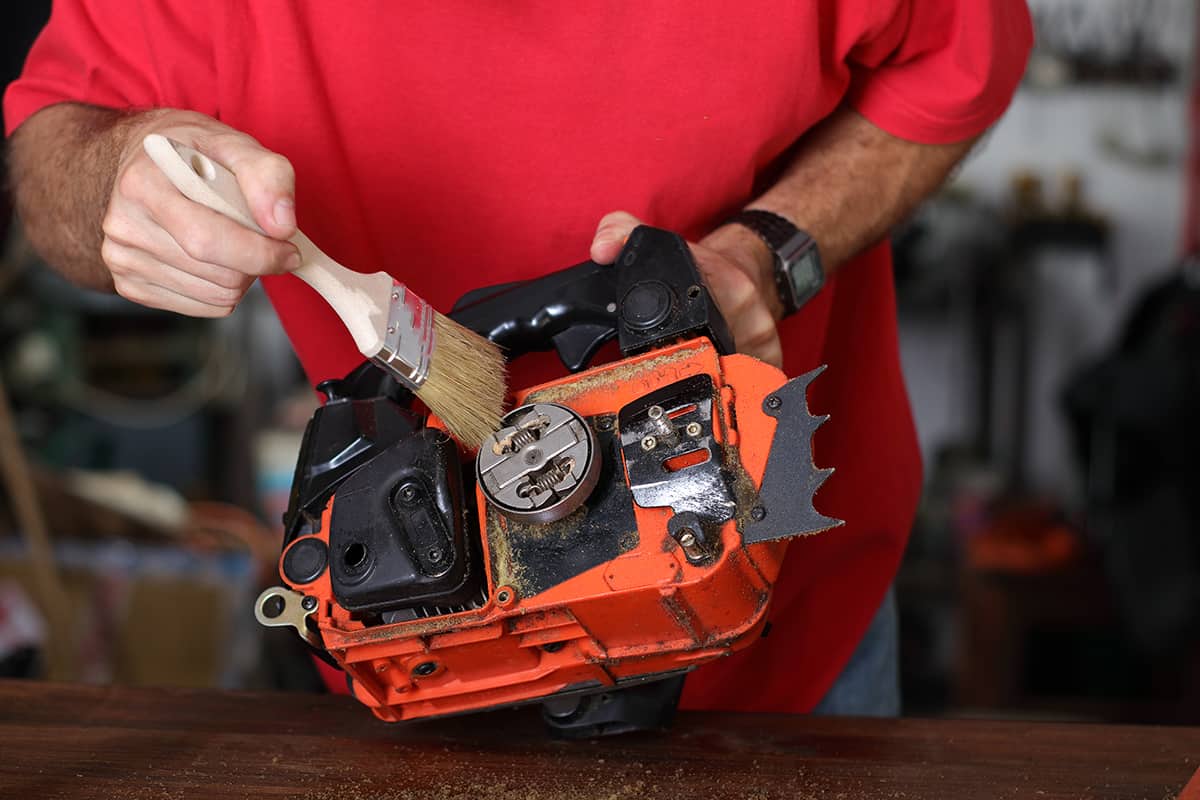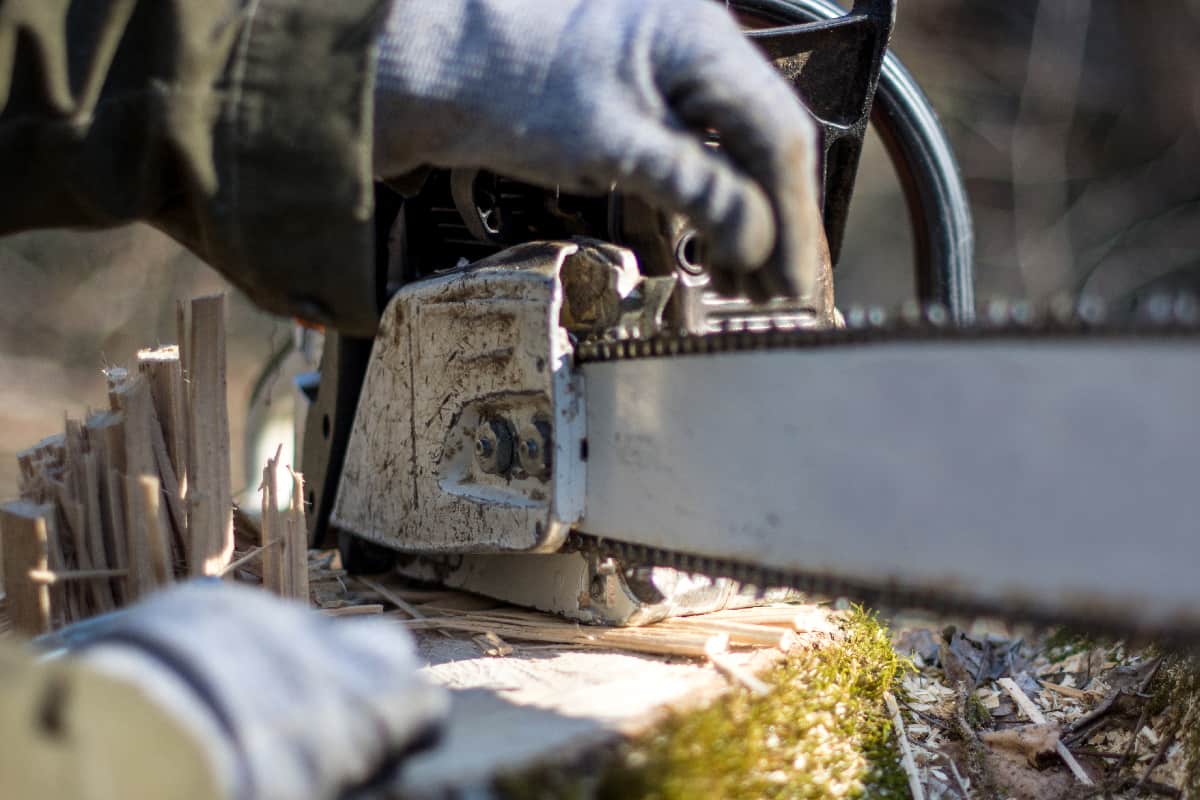A well-lubricated chain and bar are vital to an efficient and long-lasting chainsaw. A broken automatic oiler can be a significant problem and prevent you from doing your work. Don't worry; we've done our research and are here to help you get back to cutting wood.
The most common reasons why your automatic oiler isn't working are:
- Your chainsaw's oil tank is empty.
- The chainsaw oiler is clogged.
- The oil pump is broken.
However, just knowing why your chainsaw's automatic oiler is not functioning properly is not enough. You'll have to learn more to get and keep your chainsaw in tip-top shape. Keep reading to see why you're chainsaw's automatic oiler isn't working and how to fix it. Let's dive in!
Common Reasons Why Your Automatic Oiler Isn't Working
If you're noticing that your chainsaw isn't as efficient as it used to be or dulling out chains more frequently than expected, your automatic oiler might not be working as it should.
Here are the most common reasons for that problem:
Your Chainsaw's Oil Tank Is Empty
Your chainsaw's bar and chain may not be getting enough oil from your automatic oiler because the chainsaw's oil tank is empty.
As soon as you notice this, stop running the chainsaw. Do not cut without chain bar lubrication. The lack of lubrication can affect the machine's efficiency at best and cause severe damage to the chainsaw at worst.
Top your oil tank back up with either petroleum-based bar oil or vegetable oil for your chainsaw. But we recommend you check your chainsaw's handbook first and see what type of oil the manufacturer calls for.
See this petroleum-based bar and chain oil on Amazon.
The Chainsaw Oiler Is Clogged

If you've already topped up your chainsaw's oil tank, but your bar and chain still aren't getting enough oil, your oiler system may be clogged.
This is a fairly common problem, especially if you don't clean the inside of your chainsaw as much as you should.
When sawdust and dirt accumulate in the crevices of your chainsaw, it could block the oil outlet or oil channels that the oil travels through and prevent your bar and chain from being appropriately lubricated.
Don't worry, though; this is a relatively simple repair. Though brands and models may differ in some parts, this is the general step-by-step guide on how to clean your chainsaw's oiler system.
1. Remove Plastic Fairings

To get to your chainsaw's oiler system, you'll have to remove the plastic fairing that covers the part where the bar and the chainsaw's body connect. Start by removing the guide bar nuts that fasten the plastic fairing, clutch cover, and bar off the chainsaw's body.
2. Remove Bar And Chain
Once you've removed the plastic fairing, it's time to remove the chainsaw's bar and chain. Remember to wear protective gloves at this point to protect your hands from the sharp chain.
Remove the chain from the bar and sprocket. Your guide bar will easily slide out of the bolts that hold it in place. If you're having trouble removing the bar from its mounts, give it a gentle tap in the opposite direction.
Once you've removed the chainsaw's bar, you can access the oil outlet port.
It's going to be a small, usually a few inches long hole near the mounting bolts of your chainsaw; that's where the oil seeps out of and into the groves that lubricate the bar and chain.
Learn how to avoid ruining your chain: Can You Ruin A Chainsaw Chain?
3. Clean Oil Outlet Port And Oil Hole

You can use pressurized air if you have an air compressor at home. If not, you can use some old rags or newspapers to clean the inside of your chainsaw.
Use a screwdriver to scrape the extra tough gunk blocking your oil outlet port. Then, use a stick or some white to snake out any of the gunk or dirt blocking the oil holes of your chainsaw's bar.
4. Test It Out And Reassemble
Once you're done cleaning the whole oiling system and the canals, you can test if the automatic oiler is working. Turn your chainsaw on without the bar and chain, then tilt it on its side.
If you see oil dripping down every time you pull the chainsaw's trigger, your problem is most likely fixed. You can start reassembling your chainsaw.
The Chainsaw's Oil Pump Is Broken
If you've already topped up your chainsaw's oil tank and cleaned the oiler but are still having lubrication problems, it's, unfortunately, most likely going to be an oil pump problem.
Broken chainsaw oil pumps are common in machines that aren't used as often or if you've used the wrong oil for your chainsaw. This problem is more severe than an empty oil tank or dirty oil outlets.
You will probably need to take your machine to your local dealership or repair shop and have the professionals look at it.
What Type Of Bar Oil Should I Use?
Bar oil, also called chain oil, has two primary purposes: to lubricate the chain so it doesn't wear out too fast when cutting, and prevent the moist wood from oxidizing the bar and chain.
But choosing the wrong type of bar oil can have significant effects on your chainsaw's bar and chain and its oil pump.
Motor Oil

Motor oil is the most common type of oil you can find, and you can use motor oil as chain and bar lubricant for your chainsaw.
Though it is best to avoid SAE90 oil because of the high viscosity, it might wear out your chainsaw's oil pump faster than other oils.
The drawback is that these oils are not environmentally friendly and can give off hazardous fumes when the chainsaw gets hot because of their nature.
Gear Oil
Gear oil is not recommended for chainsaw lubrication. It's very viscous and thick, especially during the colder months.
This can seriously damage your chainsaw's oil pump, not to mention it is relatively more expensive than other oils on this list.
Plant-Based Oils
Plant-based oils, also known as bio-oils, are a widely known alternative to chain and bar oils. Vegetables, sunflowers, and canola oil are the most common types.
Plant-based oils are the only environmentally friendly types of chain and bar oil on this list.
Vegetable oil is cheap and relatively easier to find than other plant-based oils. It's a thick and consistent oil, usually only used during summer or the warmer seasons.
Sunflower oil is also another well-known plant-based oil. It's thinner than vegetable oil, so this oil is usually only used in the winter.
Canola oil is the best plant-based oil. It performs well during hot and cold months while being inexpensive and easy to find.
One drawback of plant-based oils is that, although some are more viscous, they are all relatively less dense than all the oils on this list.
This means that you'll need to refill your oil tank more often than when you're using other types of oils.
Chain And Bar Oil
Whether general or the brand your chainsaw's manufacturer recommends, chain and bar oil should be the optimum oil for your chainsaw.
This type of oil is designed explicitly against chain wear, oil pump clogging, and chain and bar oxidization.
This type of oil is more expensive than the other oils on this list because it serves a specific purpose. It also comes in two varieties, each for the particular temperature the chainsaw will be operating at.
Summer chain and bar oil are thicker and more viscous; it is during the hot months and is resistant to drying up.
Winter oil is thin and runnier, used explicitly in colder seasons to reduce over-viscosity and prevent chain and bar oxidization.
However, like all other petroleum-based oils, chain and bar oil are not environmentally friendly, especially since these oils are highly processed and have many additives.
Here's a premium bar, chain, and sprocket oil on Amazon.
In Closing

Your chainsaw may not receive adequate lubrication because you either have an empty oil tank, a clogged-up oiler system, or a broken oil pump.
Follow the instructions, and you'll be back to cutting wood with a well-oiled machine. Just be sure also to use the appropriate oil for your chainsaw.
Before you go, here are other articles that you might find interesting:

